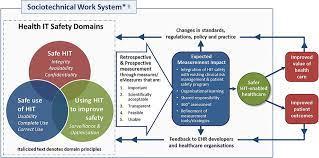Technology is rapidly transforming the healthcare industry, and with good reason. By automating tasks, improving communication, and providing access to new data and insights, technology can help to improve patient outcomes and the overall efficiency of the healthcare system.

Here are just a few of the ways that technology is improving patient outcomes:
- Electronic health records (EHRs) allow healthcare providers to access a patient's complete medical history in one place, which can help to prevent errors and improve coordination of care.
- Remote patient monitoring allows healthcare providers to track patients' health remotely, which can help to identify problems early and intervene before they become serious.
- Telehealth allows patients to receive care from a healthcare provider without having to travel to a doctor's office, which can be especially beneficial for patients who live in rural areas or have difficulty getting around.
- Virtual reality is being used to provide patients with pain relief, reduce anxiety, and improve rehabilitation.
In addition to improving patient outcomes, technology is also helping to improve the efficiency of the healthcare system. For example, EHRs can help to reduce administrative costs, and remote patient monitoring can help to reduce the number of hospital readmissions.
As technology continues to evolve, it is likely that we will see even more ways that it can be used to improve patient care and the healthcare system as a whole.
Here are some additional benefits of technology in healthcare:
- Increased access to care: Technology can help to increase access to care by making it easier for patients to connect with providers and receive care remotely. This is especially beneficial for patients who live in rural areas or have difficulty getting to a doctor's office.
- Improved quality of care: Technology can help to improve the quality of care by providing providers with access to more data and insights. This can help providers to make better decisions about patient care and to identify and address problems early.
- Reduced costs: Technology can help to reduce costs by automating tasks and improving efficiency. This can free up resources that can be used to provide better care to more patients.
Overall, technology is having a positive impact on healthcare. It is helping to improve patient outcomes, increase access to care, improve the quality of care, and reduce costs. As technology continues to evolve, we can expect to see even more ways that it can be used to improve healthcare.